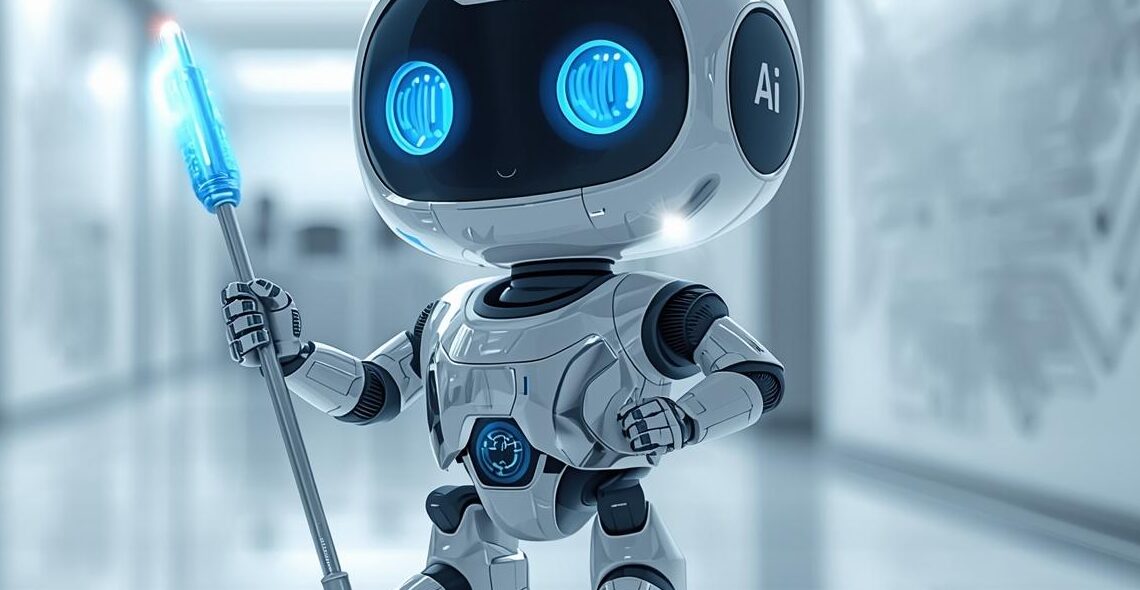Picture a shiny sports car roaring down the highway. Sleek design, flawless paint, the kind of thing people stop to admire. That’s how most of us see AI—the polished product. ChatGPT writing poems, Midjourney creating stunning visuals, or a recommendation engine serving up the perfect Netflix binge. But here’s the catch: for every sleek car you admire, there’s a factory floor somewhere, covered in grease, noise, and unseen labor. That’s where the real magic happens.
Enter Janitor AI—not the car on the showroom floor, but the engine room where the messy, essential work gets done.
The Name That Raises Eyebrows
Let’s start with the obvious: Janitor AI doesn’t sound glamorous. It doesn’t have the slick branding of “NeuralSpark” or “VisionPro.” But honestly? The name is brilliant. Because what do janitors do? They handle the stuff nobody wants to deal with but without which the whole building collapses into chaos.
Think of a master chef. The dazzling dish you Instagram in seconds only exists because someone prepped the onions, cleaned the cutting board, and made sure the ingredients weren’t spoiled. That’s Janitor AI’s job for data. No spotless kitchen, no Michelin-star meal.
Why Data Needs Cleaning in the First Place
Here’s the dirty secret: AI isn’t powered by “intelligence” so much as it’s powered by data. And data is messy. Really messy. Imagine being handed a box of puzzle pieces where half the pieces are duplicates, some are missing, and a few are chewed up by the dog. Good luck putting that picture together.
This is why data scientists live by a brutal truth: Garbage In, Garbage Out. If you feed flawed data into an AI system, don’t expect genius. Expect nonsense. Janitor AI tackles this chaos head-on.
What kind of chaos? Missing values where a dataset just… forgot something. Duplicate entries that confuse patterns. Inconsistent formatting that turns “01/02/25” into an argument over whether that’s January or February. And yes, even corrupted files that could break entire training pipelines. It’s grunt work, but it’s the foundation.
The Human Cost—and the Liberation
Before tools like Janitor AI came along, this was the life of a data scientist: hours, sometimes days, manually scrubbing spreadsheets, checking for anomalies, reformatting columns. Brilliant minds, essentially stuck doing digital janitorial shifts.
It wasn’t just tedious—it was expensive. Imagine hiring an architect and having them spend most of their time cleaning bricks. That’s the inefficiency AI research has been battling for years.
Janitor AI changes that. It automates the cleansing, the restructuring, the sanity-checking. Suddenly, those data scientists are freed up to do what they were trained for—designing smarter models, interpreting results, asking the big questions. Instead of spending their creativity on spreadsheets, they can spend it on breakthroughs.
Bigger Questions on a Bigger Stage
Of course, this isn’t just about convenience. Automating data cleaning touches something deeper. We’re not just building systems that think—we’re building systems that decide what counts as “clean” information. That’s a powerful responsibility.
Who decides what’s noise and what’s valuable? What biases might slip through if we let the algorithm sweep too aggressively? When you automate the janitor, you’re also automating judgment. And judgment is never neutral.
It’s worth pausing here. Because the more foundational a technology becomes, the more quietly powerful it is. Janitor AI doesn’t just shape data—it shapes the knowledge built from that data.
Appreciating the Hidden Machinery
So yes, it’s easy to celebrate the shiny sports cars of AI. The models that wow us with their creativity and speed. But let’s not forget the sophisticated road-building equipment, the grease-stained machinery, the janitors working behind the curtain. Without them, none of the polish exists.
Janitor AI is a reminder that progress isn’t just about dazzling applications—it’s about integrity at the foundation. The future of AI won’t just be measured by how fast or creative our systems get, but by how trustworthy their data is. And trust starts with a good clean-up.
Because in the end, every Ferrari still needs a solid road. And the next frontier isn’t just flashier cars—it’s better roads.




